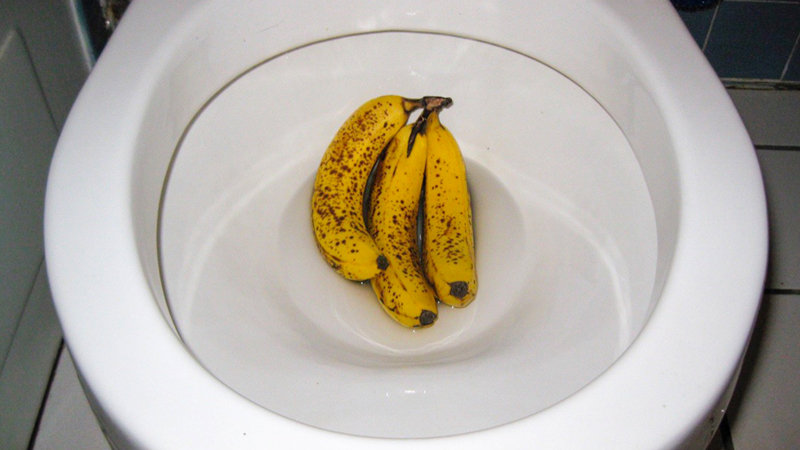Can You to Dispose of Food in the Toilet?
Can You to Dispose of Food in the Toilet?
Blog Article
In this article further down you will find additional awesome data in regards to Is it safe to flush food (especially rice) down the toilet?.

Introduction
Many individuals are usually confronted with the issue of what to do with food waste, especially when it comes to leftovers or scraps. One usual concern that emerges is whether it's alright to flush food down the commode. In this post, we'll explore the reasons why individuals may think about flushing food, the effects of doing so, and alternate methods for correct disposal.
Reasons that people could take into consideration flushing food
Lack of recognition
Some people may not recognize the prospective injury caused by flushing food down the commode. They may wrongly think that it's a safe practice.
Benefit
Flushing food down the bathroom might feel like a quick and easy solution to taking care of undesirable scraps, specifically when there's no neighboring garbage can readily available.
Idleness
In many cases, individuals might merely select to flush food out of sheer laziness, without considering the effects of their activities.
Consequences of flushing food down the toilet
Ecological effect
Food waste that ends up in rivers can add to pollution and injury water ecosystems. In addition, the water utilized to purge food can strain water sources.
Plumbing concerns
Purging food can lead to stopped up pipes and drains, creating costly pipes repairs and troubles.
Types of food that ought to not be flushed
Coarse foods
Foods with fibrous structures such as celery or corn husks can get tangled in pipes and trigger blockages.
Starchy foods
Starchy foods like pasta and rice can take in water and swell, resulting in obstructions in pipes.
Oils and fats
Greasy foods like bacon or cooking oils should never ever be purged down the bathroom as they can solidify and cause obstructions.
Appropriate disposal methods for food waste
Using a waste disposal unit
For homes furnished with garbage disposals, food scraps can be ground up and flushed via the plumbing system. However, not all foods appropriate for disposal in this way.
Recycling
Particular food product packaging materials can be reused, decreasing waste and reducing environmental influence.
Composting
Composting is an environment-friendly means to take care of food waste. Organic products can be composted and made use of to improve soil for gardening.
The value of proper waste administration
Reducing ecological injury
Proper waste monitoring practices, such as composting and recycling, assistance decrease pollution and preserve natural deposits for future generations.
Shielding plumbing systems
By preventing the method of flushing food down the bathroom, home owners can prevent costly plumbing repair work and preserve the stability of their plumbing systems.
Verdict
In conclusion, while it might be alluring to purge food down the commode for comfort, it is very important to understand the potential repercussions of this activity. By taking on correct waste administration techniques and disposing of food waste responsibly, individuals can contribute to healthier plumbing systems and a cleaner atmosphere for all.
FLUSH FOOD DOWN THE TOILET?
FLUSHING FOOD CAN CAUSE BLOCKED DRAINS IN YOUR HOME
All of the plumbing fixtures in your home are connected to the same sewer pipe outside of your home. This outdoor sewer pipe is responsible for transporting all the wastewater from your home to the Council sewer mains. Even small pieces of food that go down the kitchen sink can cause problems for your sewer. It should therefore be obvious that flushing larger bits of food, such as meat, risks a clog in either the toilet itself or the sewer pipes. Flushing greasy food is even more problematic because oil coagulates when it cools, coating the interior lining of your pipes.
THE TOILET IS NOT A BIN
Food isn’t the only thing that people shouldn’t be flushing down the toilet. People use the toilet to dispose of all kinds of things such as tampons, makeup wipes, dental floss, kitty litter and even underwear. Water goes to great lengths to educate residents about the high costs and stress placed on wastewater treatment systems simply from people flushing the wrong stuff down the toilet. It costs taxpayers millions of dollars each year, and homeowners thousands in blocked drain repairs.
FLUSHING FOOD IS A WASTE OF WATER
Flushing food is a waste of our most precious resource - water. In June this year Level 1 water restrictions were introduced to protect water supply from drought conditions. Much of New South Wales continues to be affected by prolonged drought with recent figures revealing up to 97 per cent of the state remains in drought. Depending on whether you have a single or dual flush toilet, every single flush uses between five and 11 litres of water. In the current climate this is a huge amount of water to be wasting on flushing food that should be placed in the bin (or better yet, the compost).
https://www.jabplumbingsolutions.com.au/blog/can-you-flush-food-down-the-toilet

As an avid person who reads about Think Twice Before Flushing Food Down Your Toilet, I figured sharing that editorial was a great idea. Do you know someone else who is in the market for the topic? Take a moment to promote it. Thanks a lot for being here. Please check up our site back soon.
Click For More Information Report this page